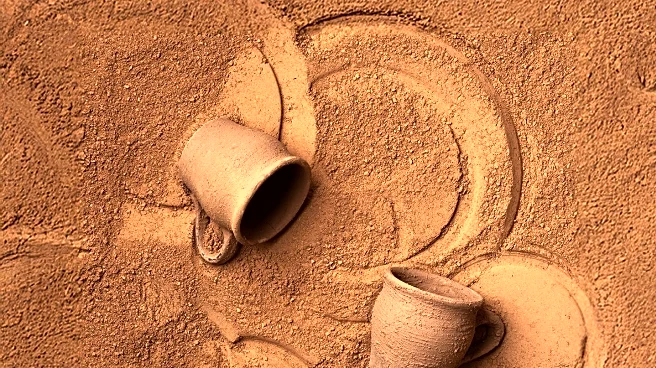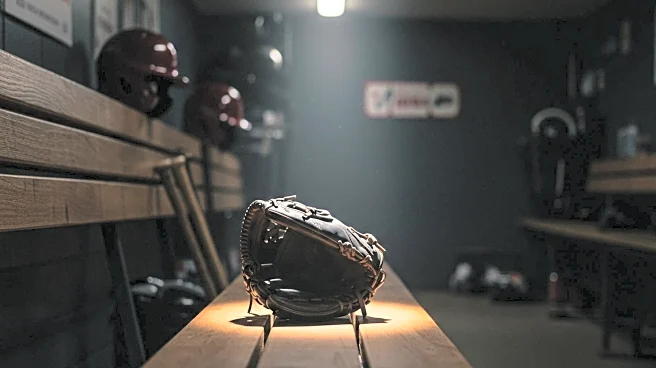What's Happening?
Boston Borough Council is set to showcase archaeological finds from a community dig conducted in Rosegarth, Boston. The dig, which took place over two weeks in October 2024, uncovered hundreds of items including pottery, glass, brick, tile, metalwork, and shells. Additionally, 500 pieces of animal bone or fragments were discovered, suggesting the possible existence of a medieval abattoir in the area. These artefacts have been cleaned, historically verified, and documented, and will be displayed at Boston Guildhall starting August 29 until the end of the year. The exhibition aims to educate visitors about the dig and allow them to handle some of the finds.
Why It's Important?
The exhibition of these archaeological finds is significant as it provides insight into the historical landscape and community life in Boston. By showcasing these artefacts, the Boston Borough Council is promoting cultural heritage and encouraging public engagement with local history. This initiative not only highlights the importance of preserving historical artefacts but also fosters a sense of community pride and identity. The potential discovery of a medieval abattoir adds a layer of historical intrigue, offering a glimpse into the economic activities of the past. Such exhibitions can enhance tourism and educational opportunities in the region.
What's Next?
The exhibition at Boston Guildhall is expected to attract visitors interested in archaeology and local history. It may lead to further archaeological investigations in the area, especially concerning the suspected medieval abattoir. The council might consider organizing educational programs or workshops to complement the exhibition, thereby increasing public interest and participation in historical preservation. Additionally, the success of this exhibition could inspire similar initiatives in other regions, promoting broader cultural and historical awareness.
Beyond the Headlines
The exhibition raises questions about the ethical considerations in archaeology, such as the handling and display of artefacts. It also highlights the role of community involvement in uncovering and preserving history. The dig brought together people of various ages and backgrounds, demonstrating the unifying power of shared cultural heritage. Long-term, this could lead to increased funding and support for archaeological projects, emphasizing the importance of community-driven historical exploration.













